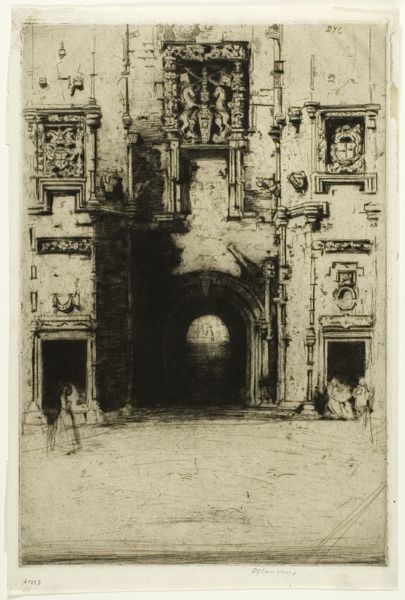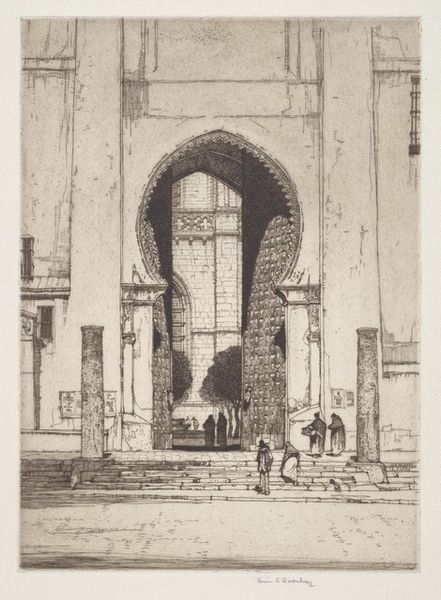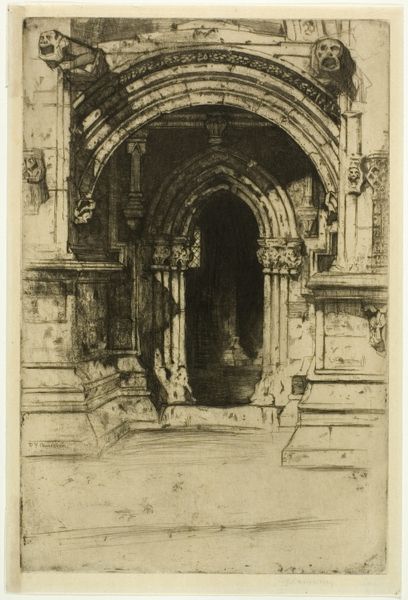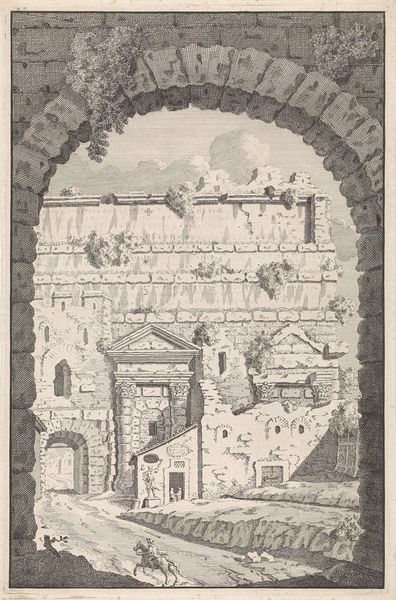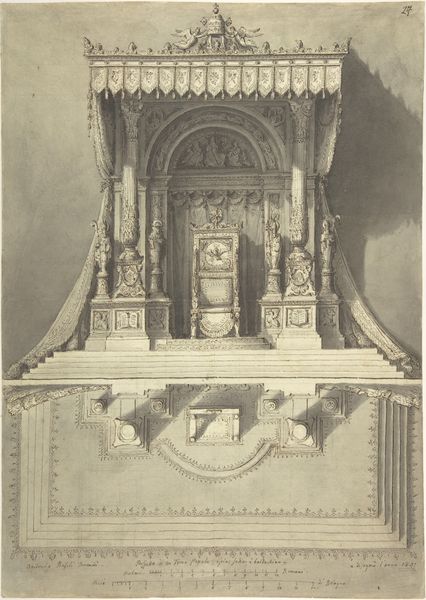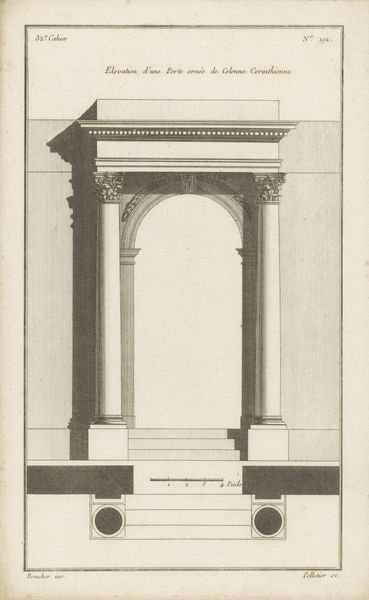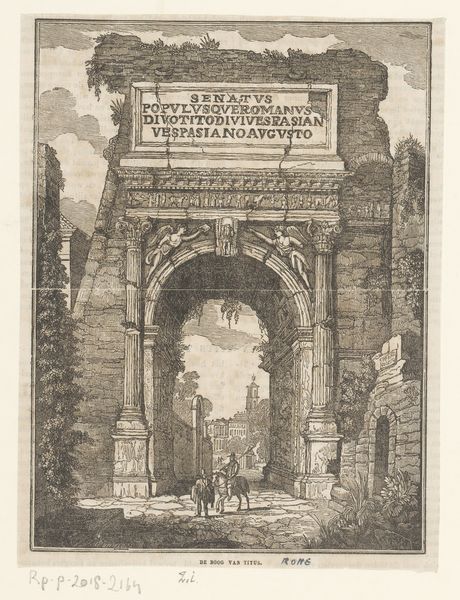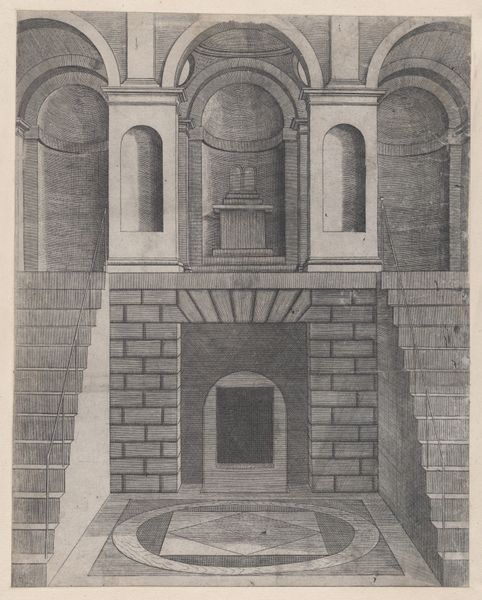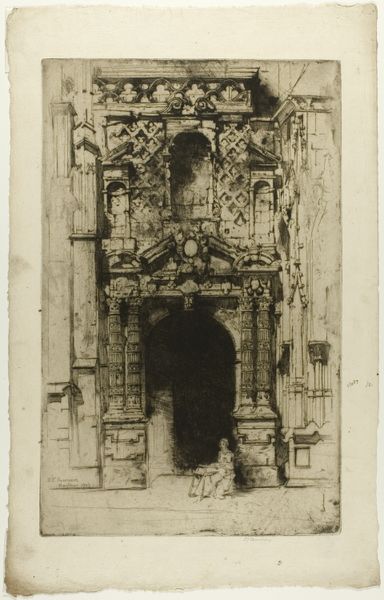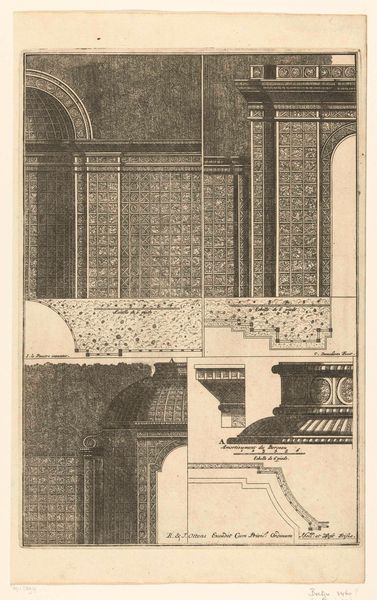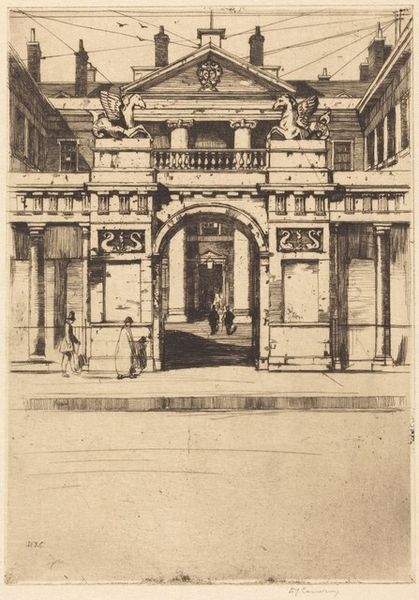
drawing, print, etching, paper, engraving
#
drawing
# print
#
etching
#
paper
#
framed image
#
cityscape
#
italian-renaissance
#
engraving
Dimensions: 115 × 79 mm (image/plate); 138 × 100 mm (sheet)
Copyright: Public Domain
This is Donald Shaw MacLaughlan's "Parma, Italy," an etching on paper. The scene is rendered through a painstaking additive process. The artist carefully applied wax to a metal plate, then used a needle-like tool to create an image. The plate was then submerged in acid, which bit into the exposed lines, creating grooves. This piece, like many prints, is valued for its reproducibility. Prints allowed for the widespread distribution of images in an era before mass media. Etchings like these brought art and information to a broader audience, democratizing access to culture beyond the elite. Consider the labor involved in creating this image, the careful application of technique, the use of acid, and the physical process of printing. This etching embodies a marriage of craft and industry, reflecting the changing landscape of art production in the early 20th century. It reminds us that every artwork is a result of human ingenuity and the tools we use to shape our world.
Comments
No comments
Be the first to comment and join the conversation on the ultimate creative platform.
